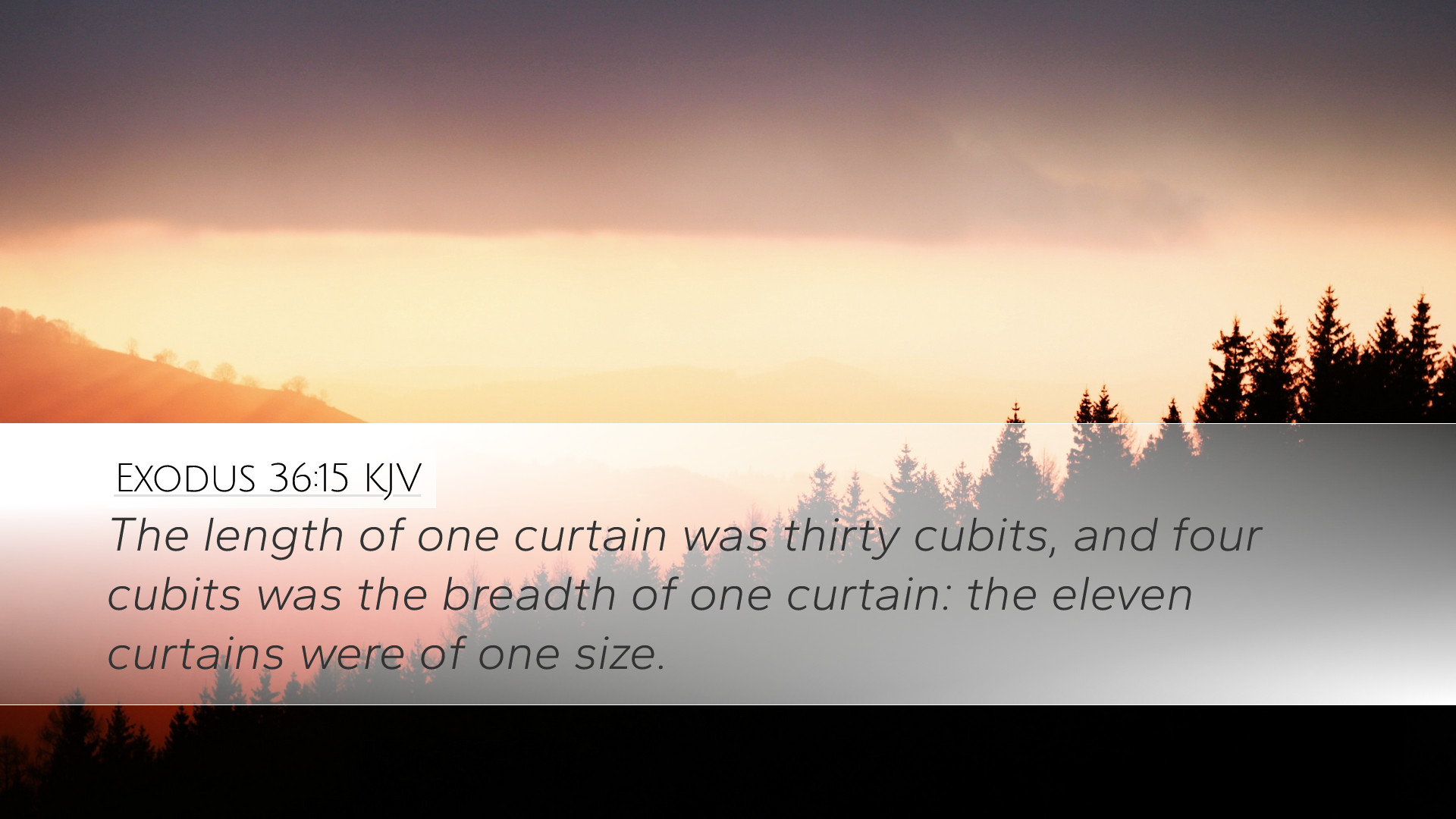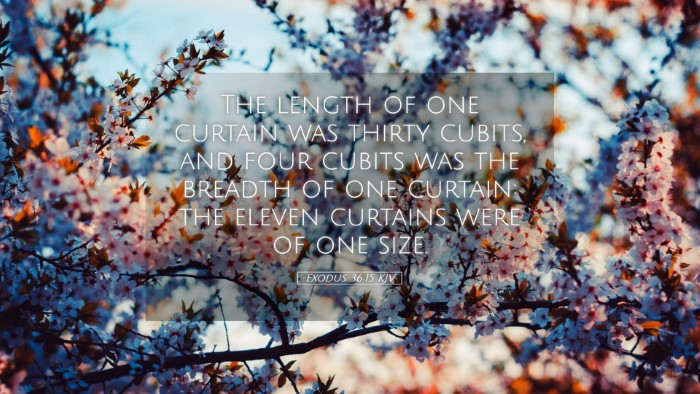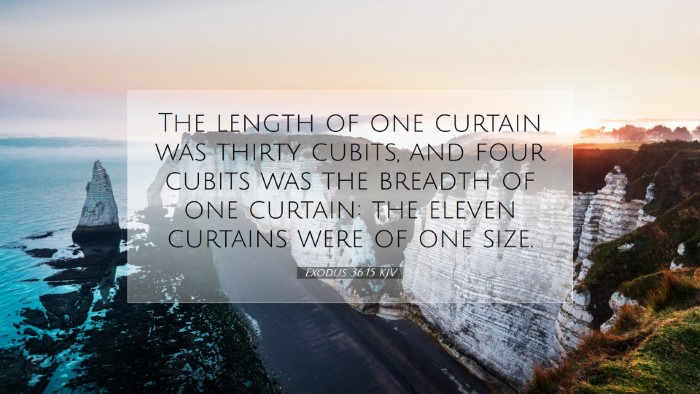Commentary on Exodus 36:15
Verse Context: Exodus 36:15 states, “The length of the curtain was thirty cubits, and the breadth six cubits; the curtains were all of one size.” This verse is part of a broader passage that details the construction of the Tabernacle, the dwelling place of God among His people.
Overview of the Tabernacle
The Tabernacle served as a central place of worship for the Israelites during their journey through the wilderness. It was designed to be portable and constructed with various materials, reflecting the glory of God. The details provided in this chapter highlight the intentionality and precision behind God’s design.
Insights from Commentaries
Matthew Henry
Matthew Henry emphasizes the coherence and unity in the design of the curtains. He notes that the uniformity in size points to the idea of divine order. Each piece, while distinct in function and position, works harmoniously within the larger structure to create a sacred space.
Henry also draws attention to the symbolism of the curtain itself. The curtains represented the separation between God and man due to sin, indicating that while God desires to dwell with His people, there remains a barrier that must be addressed. This foreshadows the coming of Christ, who would tear the veil of separation.
Albert Barnes
Albert Barnes provides a detailed examination of the measurements mentioned in the verse. He explains that the size of the curtains (30 cubits in length and 6 cubits in breadth) contributes to the overall dimensions of the Tabernacle, which speaks to the divine blueprint established by God. This design is not only significant in its practicality but also in its spiritual symbolism.
Barnes further elucidates that the uniformity of the curtains (being of "one size") signifies the equality of all believers before God. Just as the curtains are the same in measurement, so too are all people equal in the eyes of the Lord, regardless of their backgrounds or status. This serves as a reminder that access to God is available to all who come in faith.
Adam Clarke
Adam Clarke delves into the practical aspects of the construction of the curtains. He notes the materials used (fine linen and blue, purple, and scarlet yarn) and their significance in the context of Israelite worship practices. These rich materials were indicative of God’s majesty and the beauty of holiness.
Additionally, Clarke offers insight into the historical context of the Israelites’ nomadic lifestyle. The portable nature of the Tabernacle and its curtains allowed the people to worship regardless of their location, showing God’s commitment to be with His people in every circumstance.
Theological Implications
The construction of the Tabernacle, as illustrated in Exodus 36:15, provides rich theological insights:
- God’s Presence: The Tabernacle was the manifestation of God's desire to reside among His people. The meticulous detail in its construction indicates the seriousness of this relationship.
- Holiness: The separation indicated by the curtains symbolizes God’s holiness. It is a reminder of the need for atonement and the need for a mediator, which ultimately points to Christ.
- Unity in Diversity: The uniform size of the curtains signifies that while there may be diversity in the believer’s life, in Christ we are one body. This unity is paramount in worship and community life.
Application for Contemporary Believers
For pastors, students, theologians, and Bible scholars, the insights gleaned from Exodus 36:15 can guide practical theology:
- Worship Planning: The Tabernacle serves as a model for sacred space in worship. Thoughtful design in worship environments can enhance the community's experience of God’s presence.
- The Call to Holiness: Just as the Tabernacle was designed for the holiness of God, believers are called to pursue holiness in their lives, reflecting God’s character to the world.
- Understanding Unity: In a world marked by division, the symbolic equality of the curtains challenges believers to foster unity within the body of Christ, celebrating diversity while keeping the gospel central.
Conclusion
Exodus 36:15, while detailing a specific aspect of the Tabernacle’s construction, opens a window into profound theological truths about God’s presence, holiness, and the nature of worship. Engaging with these insights not only enriches the understanding of this passage but also encourages a deeper relationship with God.


